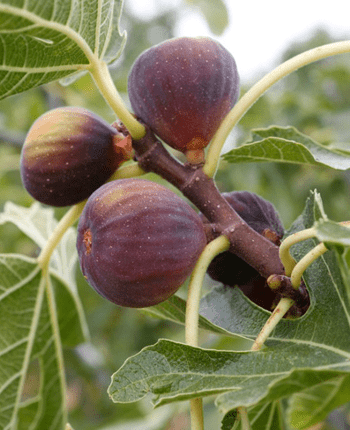
Figs have figured in the human diet for so long and they were mentioned in some ancient writings and the Bible. Thought to have been cultivated first in Egypt, fig cultivation was said to have spread to Crete and to ancient Greece around the 9th century. Ancient Rome also revered fig as a sacred fruit. Ancient conquerors later introduced figs to other regions in the Mediterranean area. By 16th century, figs were introduced by the Spaniards to the West.
There are more than 100 fig varieties and they differ in color and texture. Whatever the variety of a particular fig fruit is, figs in general have a lot of health benefits. Aside from being a good source of the trace mineral manganese, some of the health benefits of figs are:
Potassium
To Help Lower High Blood Pressure. Potassium is a mineral that is known to help control blood pressure. High intake of sodium and low intake of potassium can lead to high blood pressure or hypertension. Figs are a good source of potassium and can help lower high blood pressure and the risk of somebody developing hypertension. Including figs in your regular diet will greatly help lower your risk to have high blood pressure. They are found in many Mediterranean diet recipes. That link also takes you to a free Mediterranean diet report you should go and sign up for if you don’t have a copy already.
Calcium To Promote Bone Density
One of the fruits that is a good source of calcium is fig. An 8 oz-wt serving of fig contains around 79 milligrams of calcium. Calcium is a mineral that is known to promote bone density and other functions for a body to achieve optimal health. Moreover, the potassium found in fig also counteracts the calcium loss of the body through urinary excretion, especially in people who have diets high in salt consumption. This way, thinning out of bones at a fast rate can be prevented.
Fiber To Help Lose Weight And Prevent Postmenopausal Breast Cancer
If there is one good thing about figs, they are a good source of dietary fiber. Aside from tasting good, figs are good for the health. If you want to lose weight, you must know that fiber-rich foods like figs have a positive effect on weight loss and weight management. If you are on a weight loss or weight management program, having figs in your regular diet will be of great help.
Food rich in fiber like figs together with pears, apples, dates, and prunes are also said to help reduce the risk of breast cancer among postmenopausal women. Coupled with hormone replacement, the consumption of food rich in fiber can reduce the risk of breast cancer compared to those who consume the least fiber.
Anti-Diabetic And Cardiovascular Benefits Of Figs Leaves
If you think that fig leaves are inedible, think again. Aside from being edible, fig leaves also have health benefits. Fig leaves have anti-diabetic properties and can reduce the insulin amount needed by diabetic people who are on insulin injections. To produce this insulin-lowering effect, the liquid extract from fig leaves can be simply added to a meal of an insulin-dependent person. The health benefit of fig leaves does not end here. Fig leaves have shown the potential to help lower triglyceride levels. Triglycerides is a form of fat that circulates in a body’s bloodstream.
…hope this has been helpful,
Ray Baker

